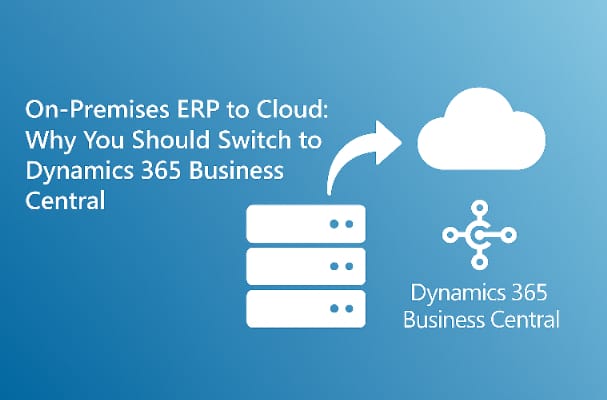For decades, businesses have relied on on-premises ERP systems to manage finance, operations, supply chain, and customer data. While these legacy systems once offered stability, they now struggle to keep pace with the demands of modern business. Rising maintenance costs, limited scalability, and security risks are pushing organizations to reconsider their ERP strategies.
Enter Dynamics 365 Business Central—a cloud-based ERP designed for agility, integration, and future growth. Transitioning from on-premises ERP to Business Central is no longer just an IT upgrade—it’s a business transformation.
Why Businesses Are Moving from On-Premises ERP to the Cloud
1. High Costs of Legacy ERP
On-premises systems demand expensive servers, licensing, IT support, and periodic upgrades. By moving to the cloud, businesses eliminate these hidden costs. Business Central runs on Microsoft’s Azure cloud, offering a subscription-based model that is predictable, scalable, and cost-efficient.
2. Remote and Hybrid Work Enablement
Legacy ERPs often restrict access to physical offices or VPNs. With Business Central, employees can work securely from anywhere—whether in the office, at home, or on the move—empowering true workforce flexibility.
3. Better Security and Compliance
Cloud ERP might raise concerns for some, but Microsoft invests billions annually in cybersecurity. Business Central comes with built-in compliance, advanced threat protection, and automated updates, ensuring businesses always run on the latest and most secure version.
4. Seamless Integrations Across Microsoft Ecosystem
Unlike on-premises ERP, which often struggles with integrations, Business Central natively connects with Microsoft 365, Power BI, Teams, and Power Platform. This creates a unified digital workplace, where data flows across applications, breaking down silos and enabling smarter decision-making.
5. Scalability Without Disruption
With traditional ERP, scaling means costly infrastructure changes. Business Central grows with your business—you can easily add users, expand capabilities, or integrate industry-specific apps from Microsoft AppSource without downtime or heavy IT overhead.
Key Benefits of Switching to Dynamics 365 Business Central
- Reduced IT burden – No servers to maintain, no manual patches, no outdated versions.
- Data-driven insights – Real-time dashboards and AI-driven forecasting improve planning and decision-making.
- Improved collaboration – Shared data across finance, sales, supply chain, and customer service teams.
- Future readiness – Cloud ERP ensures your business can quickly adapt to new regulations, markets, and innovations.
Migration Made Simple
One of the biggest concerns with ERP modernization is data migration. Microsoft and certified partners (like Dynamics Square) provide proven migration tools and methodologies to ensure a smooth transition without business disruption. From assessing existing infrastructure to transferring data and training users, the process is designed to be efficient and risk-free.
Is It Time to Move?
If you find your current ERP system slowing down operations, costing too much in maintenance, or preventing your teams from working flexibly, it’s a clear signal—it’s time to move to the cloud.
Dynamics 365 Business Central offers not just ERP, but a foundation for growth, agility, and innovation. By making the switch today, you’re not just modernizing your IT—you’re empowering your entire business to thrive in the digital-first economy.
